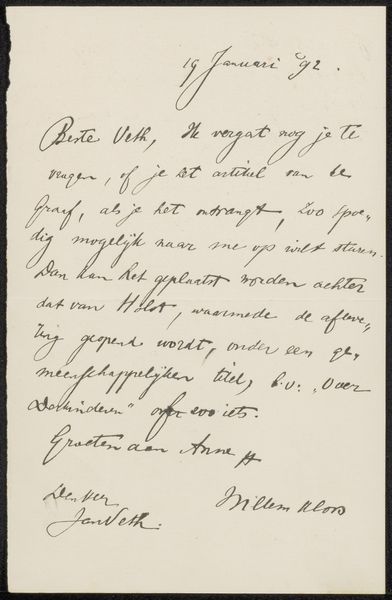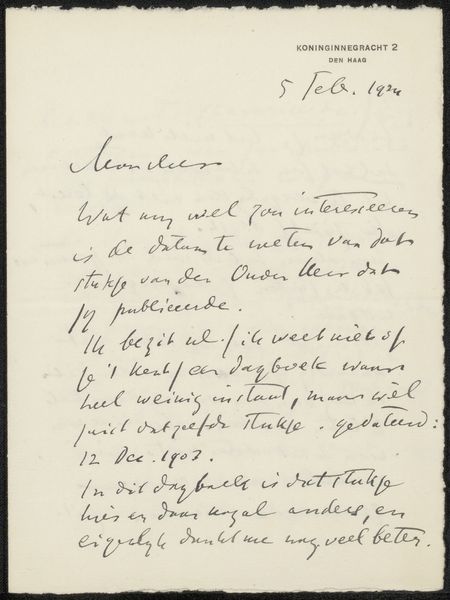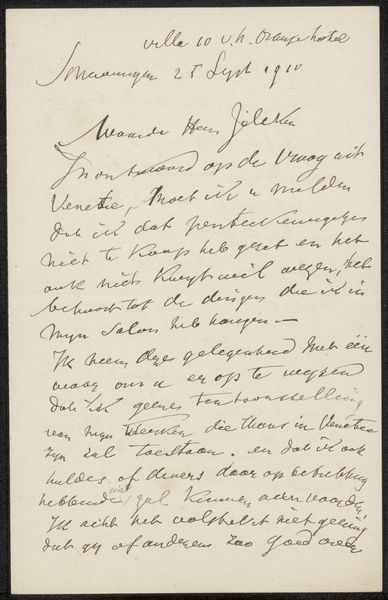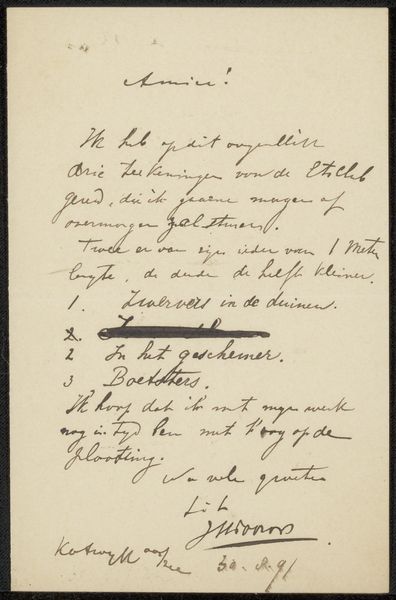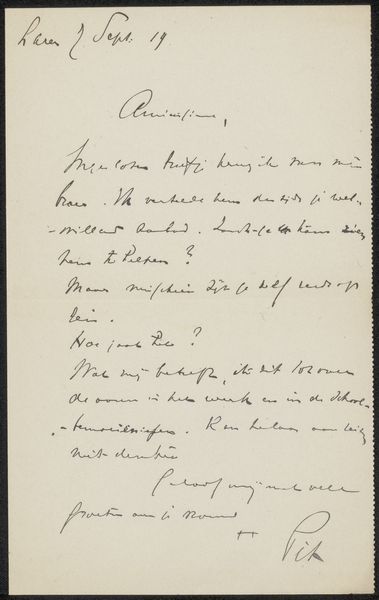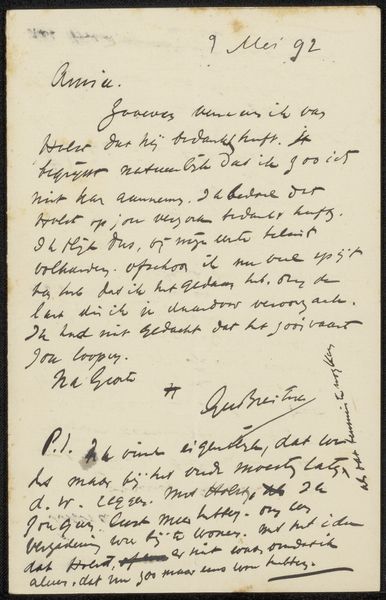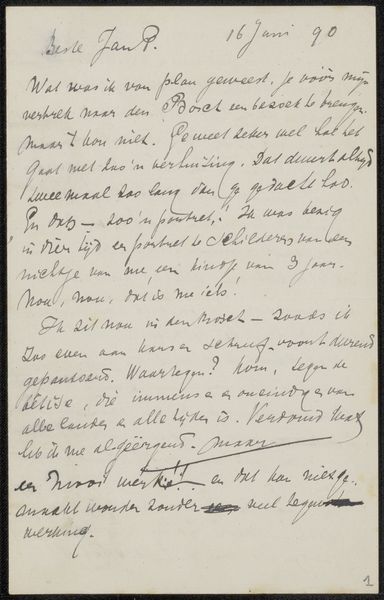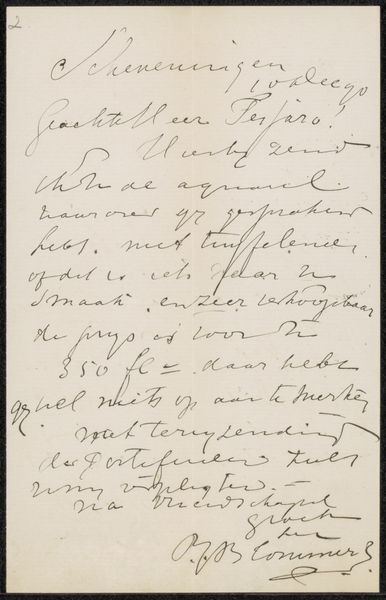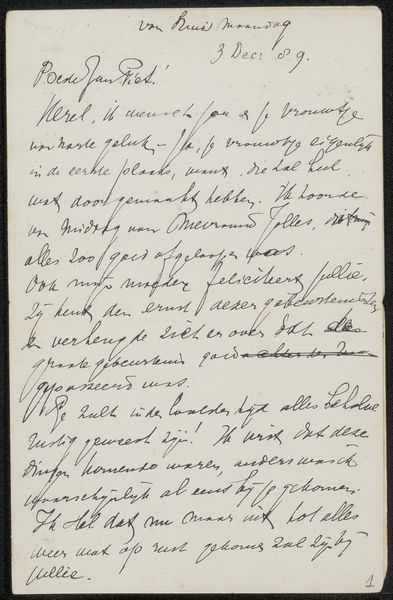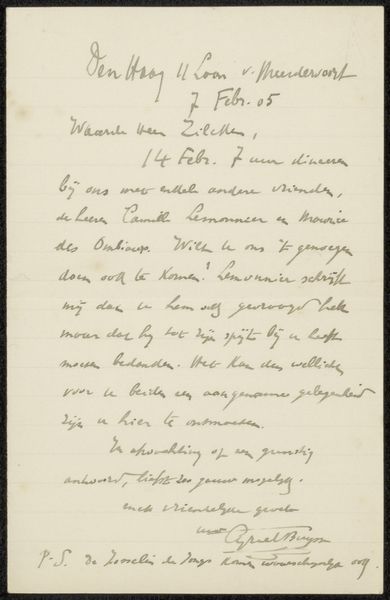
Copyright: Rijks Museum: Open Domain
Curator: This work is entitled "Brief aan Pieter Haverkorn van Rijsewijk", or "Letter to Pieter Haverkorn van Rijsewijk," dating from 1861-1904 and attributed to Théophile de Bock. It's an ink drawing on paper, currently held in the Rijksmuseum. Editor: The flow of the hand-lettering really commands the page, yet its formality hints at hierarchical social structure. Curator: Precisely! Calligraphy has long been associated with power, status, and knowledge. Note how de Bock meticulously crafted each stroke. He also clearly relishes the symbolic weight of letters themselves as he forms and embellishes them. Look at the flourishes. They express far more than the content alone. Editor: Yes, the contrast is really interesting, actually. This almost performative level of careful execution actually reinforces a rigid structure of communication within an elite social circle of the period. What power dynamics might be at play? What’s implied but remains unsaid? I mean, consider to whom it is addressed! Curator: It's fascinating to consider how something as simple as a handwritten letter can convey so much about social dynamics, personal expression, and cultural values through script and style. This act of writing becomes performative through the execution and intent—revealing emotional and intellectual subtleties within the strokes. Editor: For sure, this sketch opens up so many paths of inquiry regarding identity, authorship, class. What did letter writing *mean* in 19th-century Europe? Who had access, and on what terms? Was de Bock challenging norms or embracing them through his writing? These formal techniques encoded so much back then, more than we often realize today. Curator: I love the way the calligraphic flourishes interact, visually speaking. They represent emotions, intent, status and other cultural content from that historical time and context. The symbolism lies beyond its verbal meaning, revealing subtle codes of identity within a closed system. Editor: Absolutely! We need to be able to access this now bygone language, see its social purpose, and understand the writer’s performance, which continues to resonate into our own era through visual transmission. Curator: These traces endure as powerful visual reminders and continue to move us deeply. Editor: Agreed. Each character and letter holds silent testament of past intention and present understanding.
Comments
No comments
Be the first to comment and join the conversation on the ultimate creative platform.




